|
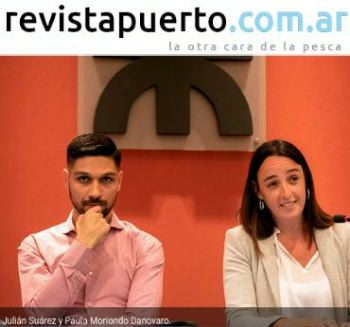
Image: courtesy Revista Puerto
Class of good practices for weetfish shrimp vessels
 ARGENTINA
ARGENTINA
Tuesday, November 30, 2021, 07:00 (GMT + 9)
The CAPEAR-AlFA Intercamara held a seminar on quality together with the National Technological University (UTN). The presentations by the head of the INIDEP shrimp program on good catching practices and the engineer Martín Titos on safety and quality, highlighted the many aspects on which the weetfish fleet must improve.
The chamber that brings together the weetfish shrimp vessels shipowners of the city of Mar del Plata organized a seminar with the UTN, which had a panel of speakers composed of the host Daniel Coluccio, the Director of Inspection, Julián Suárez and the interesting participation of biologist Paula Moriondo Danovaro and food safety consultant Martín Titos. In these two talks, the barriers that the fresh sector must break down in order to bring in quality shrimp were exposed. They spoke about the impact on the quality of good fishing practices that go hand in hand with the reasonable and sustainable use of resources and about good safety practices that will allow us to stop treating shrimp as a commodity in order to manipulate it as food.
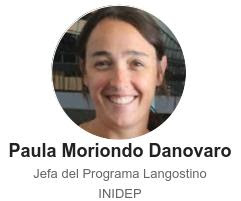 The head of the Shrimp Program, Paula Moriondo Danovaro, began her presentation in the same way that she ended it, highlighting that it is essential to work together with the private sector, administration and research. "We think it's the way a resource is managed," she said. Her talk focused on the description of a series of common situations in fishing operations that threaten both the sustainability of the resource and quality. The head of the Shrimp Program, Paula Moriondo Danovaro, began her presentation in the same way that she ended it, highlighting that it is essential to work together with the private sector, administration and research. "We think it's the way a resource is managed," she said. Her talk focused on the description of a series of common situations in fishing operations that threaten both the sustainability of the resource and quality.
“When the females begin to mature, the whole loin begins to turn green, this can generate rejection for the consumer because of its appearance and think that the product is not in good condition, but it is a simple biological process. We have had to make reports because importers have stopped the loads and we should have reported that it was in perfect condition to be consumed ”, she explained and gave some good practice guidelines for this case.
“In shrimp growth is discontinuous from a molting process, where it loses its entire shell and changes it for a new one, at that time, when the molt is taking place, the shrimp is very soft. When they come across sets made up of a large percentage of soft shrimp, the most logical and rational thing to do would be to rush to other areas where the shrimp has a rigid shell. This is related to quality, the shrimp arrives all flattened because it does not have rigidity, but also not fishing it has an extra advantage, that shrimp in a few weeks will be larger and more rigid, therefore, the yield and quality will be better ”, he indicated, adding that it would also contribute to reducing discards and pointed out: “When the shrimp is small, the molting process is repeated more rapidly, therefore it would be prudent that when they come across small shrimp they move to other areas beyond the limit percentage that it is allowed to fish small shrimp ”.
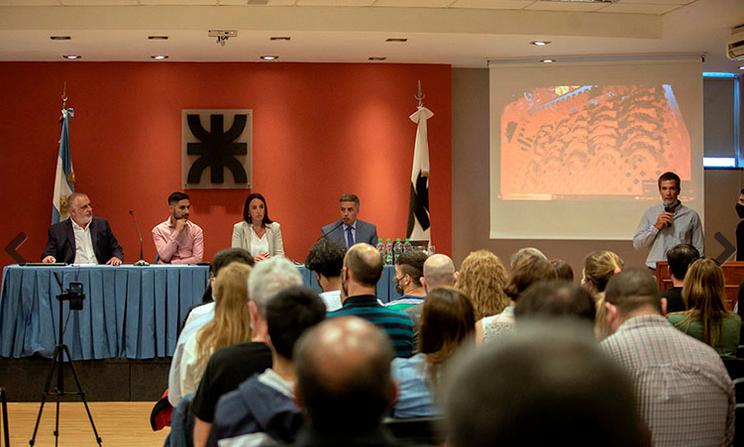
Photo: Revista Puerto
Regarding the actions on board the boats, he appealed to the conscience of those who fish when they encounter large concentrations of shrimp, given that “if very long hauls are made with the two nets they will collapse, both in the freezers that do not supply enough with the capacity of cold and processed, ending a lot of prawn in the water. If you keep it in the bag in the water, the shrimp will arrive headless, which will not result in a good quality product ”.
Specifically about the weetfish vessels, he pointed out that, in the face of large concentrations without prudent handling, “it is impossible for this shrimp to be washed, boxed and put in cold, the consequence is that the melanosis process begins that will not give a quality product and it will have a look that will not be pleasing to the consumer. And we will see images like this year of containers of shrimp with advanced melanosis that will be wasted. The sets must be done thoroughly so that the product to be processed is the best. Thus, in addition to avoiding overfishing, the quality for you will be the best possible and the product will have the value it should have ”.
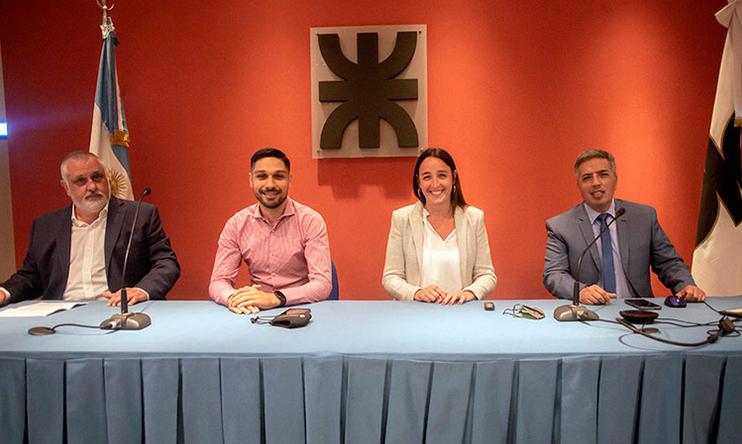
From Left to Right: Coluccio, Suárez, Moriondo Danovaro y Titos.(Photo: Revista Puerto)
Finally, he referred to the composition of the catches: “Today the shrimp is very mixed with the accompanying fauna, very mixed with hake. In sets in which the shrimp is accompanied by other species, it is also quite broken, it is squashed with the hake and is headed, it is a shrimp that goes into the water. The idea is that when the fleet encounters high concentrations of hake, it runs towards cleaner concentrations, this is also the responsibility of whoever is on top of the ship ”.
"This feedback is the best thing that can happen to the management of the resource, that is the thought that we have in this research group, we must take care of it together, there are many people involved and a lot of foreign exchange is generated for Argentina, we are willing to do it . Despite charging nothing, we do our best, we work Saturdays, Sundays, holidays, everyone knows them, so that the fishery never stops and to ensure that you have shrimp, today, tomorrow and always, " concluded the head of the Program INIDEP shrimp.
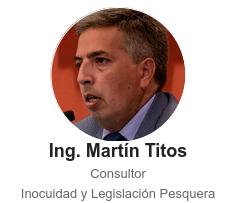 Another outstanding dissertation was that of the engineer Martín Titos, who presented the Manual of Standardized Sanitation Operating Procedures, a basic tool for conditions of habitability on board and behavior of the crews, from the reception of the shrimp, through handling and even hygiene personal. Another outstanding dissertation was that of the engineer Martín Titos, who presented the Manual of Standardized Sanitation Operating Procedures, a basic tool for conditions of habitability on board and behavior of the crews, from the reception of the shrimp, through handling and even hygiene personal.
“When you study, you understand that safety is linked to quality, but later in practice you see that it is not like that and workers should never lose sight of safety because it is related to the health of consumers. Safety exists long before quality, that is the great paradigm shift that as an industry we need to develop ”, he indicated.
There are two general principles, the conditions of food handling actions and all the accompanying tasks that have to do with hygiene and sanitation. Titos explained to a sector made up of ships over 40 years old, that the process begins from the building conditions that directly affect the handling, sanitation, hygiene and obviously the quality of the food.
“The constructive characteristics of the vessels in this chamber generally do not take into account the quality of the product that is carried, the shrimp is taken as a commodity and not as food. The energies are put in the security and the storage capacity, before in the quality. The freezers are much more advanced, in the weetfish vessels there is still a lack of work on the design and selection of materials where the food will be handled ”, said the engineer.
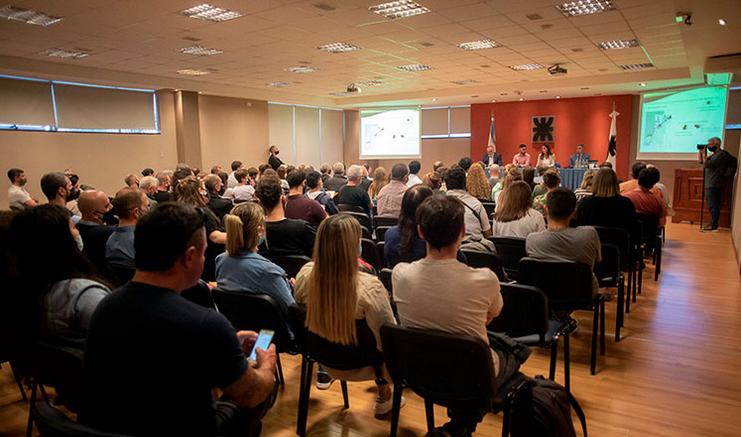
Photo: Revista Puerto
Describing the procedure manual, he explained that it includes the distribution of cleaning responsibilities giving roles, how it is going to be cleaned, how the deck is going to be prepared to receive the shrimp, how the sulphite baths are going to be done. While the sanitation procedure instructs on how to treat waste and systematize cleaning from the dissolution of the products. "The hygiene of the bathrooms is essential because many disease transmissions start in the bathrooms of the ships due to the conditions or the lack of training of the crews affecting food and food," he said.
Regarding pest control, he spoke of the need to hire specialized companies, which is an issue on which progress has been made in the freezer fleet but not in the cold store, being key given that toxic products are used in the same place where they are handled food.
.jpg)
Photo: Revista Puerto
He finally referred to the second pillar, on which quality and safety are based: the manual of good practices. "It makes a description of the handling activities, it is a simple guide for the distribution of roles", which allows to systematize and generate cleaning and hygiene habits that are not fulfilled today on board and on which, it considered, it is essential to train to crews.
The two exhibitions were a master class for the weetfish vessels owners and crews. Unfortunately, not many were present who should begin to work on good practices for both the capture of the resource and the safety and quality of the shrimp. The poor quality of the catches produced by the weetfish vessels was the distinctive note of the 2021 season; It does not seem reasonable to continue working in the same way in 2022. This seminar may be a good step in that direction, but as the speaker Titos indicated, there is a long way to go.
Author / Source: Karina Fernandez / Revista Puerto (article available only in spanish)
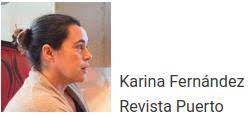
editorial@seafood.media
www.seafood.media
|
|



